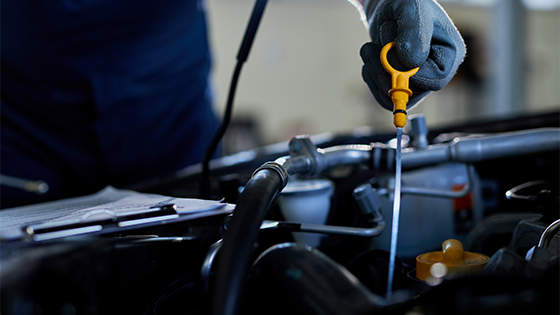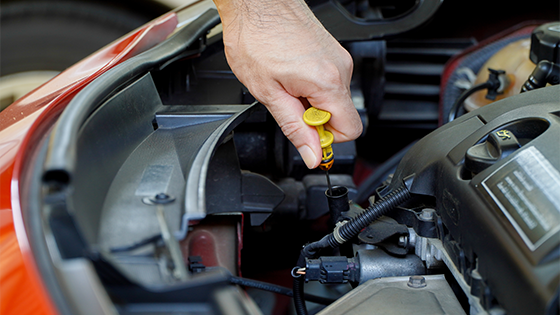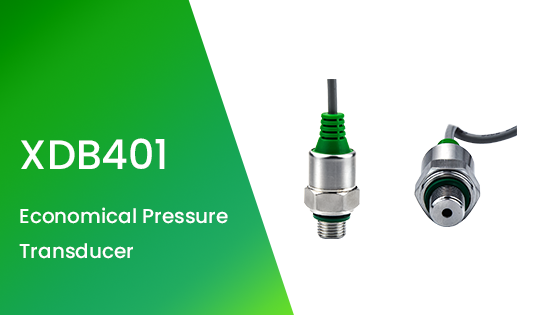
Introduction
In automobile engines, oil pressure plays a crucial role. Oil pressure refers to the pressure generated by the oil circulating within the engine. It effectively lubricates engine components, reduces friction and wear, and helps cool the engine, preventing overheating. Proper oil pressure ensures smooth engine operation under various conditions and extends its lifespan.
The impact of oil pressure on engine performance and longevity cannot be overlooked. If the oil pressure is too low, engine components will not receive adequate lubrication, leading to increased friction, accelerated wear, and potentially severe mechanical failures. Conversely, excessively high oil pressure can cause oil seals to break, resulting in oil leaks and engine damage. Thus, maintaining appropriate oil pressure is key to ensuring the engine's normal operation and prolonging its lifespan.
This article will delve into how to monitor and maintain optimal oil pressure in cars. By understanding the basics of oil pressure, common monitoring methods and tools, frequent causes of abnormal oil pressure, and practical tips for maintaining oil pressure, car owners can better care for their vehicles and keep their engines in peak condition.
I. The Basics of Oil Pressure
1. What is Oil Pressure?
Oil pressure refers to the pressure generated by oil flowing within the engine. The engine's oil pump draws oil from the oil pan and delivers it through oil passages to various engine components, forming a lubricating film to reduce friction and wear between metal parts. The magnitude of oil pressure determines the flow rate and volume of oil, ensuring it reaches all necessary lubrication points.
2. The Role of Oil Pressure in Engine Operation
Oil pressure serves multiple functions in engine operation:
- Lubrication: Oil pressure ensures that oil reaches all moving parts of the engine, forming an oil film that reduces friction and wear, protecting engine components.
- Cooling: Oil not only lubricates but also carries away heat generated during engine operation, aiding in heat dissipation and preventing engine overheating.
- Cleaning: Oil pressure pushes oil through the engine, carrying away metal debris and other impurities, and maintaining engine cleanliness.
- Sealing: Proper oil pressure helps seal gaps between piston rings and cylinder walls, preventing gas leakage in the combustion chamber and improving engine compression efficiency.
3. Ideal Oil Pressure Range
The ideal oil pressure range varies depending on the engine type and manufacturer recommendations, but generally, the oil pressure should be between 20 to 65 psi (pounds per square inch) at operating temperature. Here are reference oil pressure ranges for different types of engines:
- Four-cylinder engines: 20-30 psi
- Six-cylinder engines: 30-50 psi
- Eight-cylinder engines: 40-65 psi
At engine startup and idle, oil pressure might be lower, but it should stabilize within the above range once the engine reaches normal operating temperature. If oil pressure is below or above this range, it may indicate potential issues that need prompt inspection and resolution.
By understanding the basics of oil pressure, car owners can better monitor and maintain their vehicles' oil pressure, ensuring the engine's healthy operation. Next, we will introduce effective methods for monitoring oil pressure to guarantee normal vehicle operation.

II. How to Monitor Oil Pressure
1. Using Oil Pressure Gauges
Oil pressure gauges are primary tools for monitoring engine oil pressure, helping car owners understand the real-time status of engine oil pressure.
- Oil Pressure Warning Light on the Dashboard: Most modern vehicles have an oil pressure warning light on the dashboard. When the oil pressure is too low or too high, the warning light will illuminate, alerting the owner to check the oil pressure. This is a basic and convenient monitoring method, but the warning light usually only activates when there is a significant oil pressure anomaly and does not provide detailed oil pressure data.
- Installing and Using Oil Pressure Meters: For car owners requiring more precise oil pressure data, installing a dedicated oil pressure meter is an option. The oil pressure meter can connect directly to the engine's oil passages, displaying the current oil pressure readings in real time. Installing an oil pressure meter requires some mechanical knowledge and tools, so it is recommended to have a professional technician handle the installation. By using an oil pressure meter, car owners can monitor oil pressure changes and promptly identify and resolve potential issues.
2. Common Oil Pressure Monitoring Tools
Besides oil pressure gauges and meters, there are other oil pressure monitoring tools that can help car owners better understand their engine's oil pressure:
- Electronic Oil Pressure Sensors: Electronic oil pressure sensors can monitor oil pressure in real time and transmit the data to the vehicle's control system or display. These sensors typically feature high accuracy and quick response, reflecting oil pressure changes promptly.
- Handheld Oil Pressure Testers: Handheld oil pressure testers are portable monitoring tools that can be inserted into the engine's oil passages to measure current oil pressure. These tools are suitable for temporary checks and diagnostics, offering convenience.
3. Interpreting Oil Pressure Readings
Accurately interpreting oil pressure readings is crucial for understanding engine conditions:
- Normal Range: The oil pressure should be between 20 to 65 psi at normal operating temperature. Different engine types have specific ideal oil pressure ranges, and owners should refer to the manufacturer's recommended values.
- Abnormal Readings: If the oil pressure reading is below 20 psi, it could indicate insufficient oil, oil pump failure, or blocked oil passages. Readings above 65 psi may suggest an oil pressure regulator failure or blocked oil passages. Detecting abnormal readings should prompt immediate inspection and repair.
4. Importance of Reliable Sensors
High-quality oil pressure sensors are essential for accurately monitoring oil pressure:
- The Role of High-Quality Oil Pressure Sensors: High-quality oil pressure sensors provide precise and stable oil pressure data, helping owners promptly identify and resolve oil pressure issues, and preventing engine damage due to abnormal oil pressure.
- Advantages of XIDIBEI Sensors in Accurate Measurement: XIDIBEI's XDB401 series high-precision oil pressure sensors feature a ceramic pressure sensor core, ensuring exceptional reliability and long-term stability. These sensors not only excel in various application environments but also offer a compact design, complete surge voltage protection, and cost-effective solutions. They provide car owners with accurate oil pressure data support, ensuring the engine's normal operation. The robust stainless steel housing further enhances adaptability to diverse conditions, making it an ideal choice across multiple industrial fields.

By understanding how to monitor oil pressure, car owners can better manage and maintain their vehicles' oil pressure, ensuring the engine's healthy operation. Next, we will explore common causes of abnormal oil pressure and how to address these issues.
III. Common Causes of Abnormal Oil Pressure
Understanding common causes of abnormal oil pressure helps car owners promptly identify and resolve issues, ensuring the engine's healthy operation. Here are some frequent causes of low and high oil pressure, along with detailed case explanations.
1. Low Oil Pressure
Low oil pressure is usually caused by the following reasons:
- Insufficient Oil: Insufficient oil is one of the most common causes of low oil pressure. When oil levels are too low, the oil pump cannot draw enough oil from the oil pan, leading to a drop in oil pressure. For instance, a car owner on a long journey suddenly noticed the oil pressure warning light on the dashboard. Upon inspection, they found the oil level significantly below normal. Further checks revealed an oil pan leak, causing rapid oil consumption. In such cases, the owner needs to immediately replenish the oil and repair the leak.
- Clogged Oil Filter: The oil filter's role is to filter impurities and metal debris from the oil, keeping it clean. If the filter is clogged, oil flow is obstructed, resulting in a drop in oil pressure. In one case, a high-mileage car experienced low oil pressure at idle. Inspection revealed a severely clogged oil filter, preventing smooth oil flow. The solution is to regularly replace the oil filter, especially for frequently used or high-mileage vehicles.
- Oil Pump Failure: The oil pump is responsible for drawing oil from the oil pan and delivering it to various engine components. If the oil pump fails, such as due to wear, damage, or leakage, it cannot function properly, leading to reduced oil pressure. For example, a car owner heard unusual engine noises while driving at high speed, and the oil pressure warning light illuminated. Inspection found an oil pump failure, preventing normal oil circulation. In this case, the oil pump needs to be replaced or repaired to restore normal oil pressure.
2. High Oil Pressure
Although less common than low oil pressure, high oil pressure can also damage the engine. High oil pressure is usually caused by the following reasons:
- Oil Pressure Regulator Failure: The oil pressure regulator's role is to control and maintain engine oil pressure within the normal range. If the regulator fails, it cannot properly adjust the oil pressure, potentially causing it to rise too high. For instance, a car owner noticed abnormal high oil pressure during a cold start. Inspection confirmed a malfunctioning oil pressure regulator, requiring replacement. A faulty regulator can cause excessive oil pressure, damaging engine seals and gaskets.
- Blocked Oil Passages: Oil passages allow oil to flow within the engine. If blocked by impurities or deposits, oil flow is obstructed, causing localized high oil pressure. For example, during routine maintenance, a car owner discovered high oil pressure. Upon dismantling the engine, significant deposits were found in the oil passages. Cleaning restored normal oil pressure. Regularly cleaning oil passages and maintaining oil cleanliness are crucial for preventing abnormal oil pressure.
Through these detailed cases, car owners can better identify and address abnormal oil pressure issues, ensuring the engine's normal operation. Next, we will introduce tips for maintaining optimal oil pressure to help car owners better care for their vehicles.
IV. Tips for Maintaining Optimal Oil Pressure
To ensure the engine's normal operation and extend its lifespan, maintaining optimal oil pressure is essential. Here are some effective methods and tips to help car owners maintain optimal oil pressure.
1. Regularly Change Oil and Oil Filters
- Choosing the Right Oil: Selecting the appropriate oil is crucial for maintaining optimal oil pressure. The viscosity and type of oil should match the manufacturer's recommendations. Using the wrong viscosity oil can lead to either low or high oil pressure. For example, some engines require higher viscosity oil to ensure stable oil pressure at high temperatures.
- Replacement Intervals and Methods: Regularly changing the oil and oil filter is a fundamental measure to maintain engine health. Typically, oil should be changed every 5,000 to 7,500 kilometers or every six months, but the specific interval should be based on the vehicle's usage and the manufacturer's advice. Follow these steps when changing the oil:
- Park on a level surface and ensure the engine is cool.
- Use a jack to lift the vehicle and place an oil pan to catch the old oil.
- Unscrew the oil pan drain bolt to let the old oil drain out.
- Replace the oil filter, applying a small amount of new oil to the filter's sealing ring.
- Tighten the drain bolt, pour in new oil, start the engine, and check the oil level.
2. Inspect and Maintain the Oil Pump
- Steps to Check the Oil Pump: The oil pump is a critical component for maintaining engine oil pressure, and its condition should be checked regularly. Here are some steps for inspection:Tips for Replacing or Repairing the Oil Pump: If the oil pump is found to be problematic, it needs to be replaced or repaired promptly. Replacing the oil pump generally requires professional mechanical knowledge, so it is recommended to have a technician perform the task. When repairing or replacing the oil pump, ensure that original or high-quality parts are used to guarantee performance and longevity.
- Start the engine and check if the oil pressure warning light on the dashboard is normal.
- Use an oil pressure gauge to measure oil pressure, ensuring it is within the recommended range.
- Listen for abnormal engine noises, which could indicate oil pump wear or failure.
3. Maintain the Engine Cooling System
- Impact of the Cooling System on Oil Pressure: The state of the engine cooling system directly affects oil pressure. The cooling system helps maintain engine temperature through the radiator and coolant, preventing overheating. A malfunctioning cooling system can cause the engine to overheat, affecting oil viscosity and pressure.
- Regularly Inspect and Maintain the Cooling System: Regular inspection and maintenance of the cooling system are essential for the engine's normal operation:
- Check coolant levels and refill as needed.
- Inspect the radiator and water pump for leaks or damage.
- Regularly replace the coolant to ensure effective heat dissipation.
- Clean the radiator surface to prevent dust and debris blockage.
By following these tips for maintaining optimal oil pressure, car owners can effectively care for their vehicles, ensuring smooth engine operation under various conditions.
V. Responding to Oil Pressure Faults
While driving, the illumination of the oil pressure warning light can be alarming for car owners. Promptly addressing oil pressure faults can prevent further engine damage. Here are specific measures for dealing with low and high oil pressure warnings:
1. How to Handle a Low Oil Pressure Warning Light
- Immediately Check Oil Levels: When the oil pressure warning light illuminates, the first step is to park and check the oil levels. Using the dipstick, verify that the oil level is within the appropriate range. If the oil level is low, replenish with the recommended type of oil immediately.
- Park and Inspect: If the oil level is normal but the warning light remains on, park the vehicle in a safe place for a detailed inspection. Follow these steps:
- Check if the oil filter is clogged and replace it if necessary.
- Inspect the oil pump's(https://en.wikipedia.org/wiki/Oil_pump_(internal_combustion_engine)) condition and repair or replace it if faulty.
- Look for any leaks in the engine to ensure the oil lines are intact.
- If unsure of the exact problem, contact a professional technician for further diagnosis and repair.
2. Handling High Oil Pressure Warnings
- Inspect the Oil Pressure Regulator: High oil pressure is often caused by a faulty oil pressure regulator. Inspect the regulator to ensure it properly adjusts and maintains suitable oil pressure. If a malfunction is detected, replace the regulator promptly.
- Clean Oil Passages: If the oil pressure regulator is functioning correctly but high oil pressure persists, blocked oil passages may be the cause. Check and clean impurities and deposits from the oil passages to ensure smooth oil flow. This can involve partial engine disassembly or using professional cleaning agents.
By promptly addressing oil pressure warning lights, further engine damage can be avoided, ensuring normal vehicle operation.
Conclusion
Oil pressure is a key factor in ensuring engine performance and longevity. This article has explained how to monitor and maintain optimal oil pressure, including regular oil and filter changes, oil pump inspection and maintenance, and keeping the engine cooling system in good condition.
Regular maintenance and timely response to oil pressure issues are crucial for preventing engine failures. Both low and high oil pressure can damage the engine, so car owners should closely monitor oil pressure changes and take appropriate measures when needed.
Paying attention to oil pressure and ensuring the vehicle's long-term health is the responsibility of every car owner. With the guidance provided in this article, car owners can better protect their engines and extend their vehicles' lifespans.
Post time: Aug-09-2024

